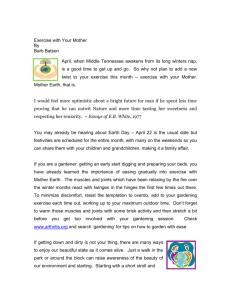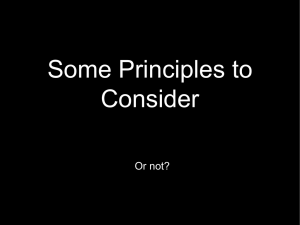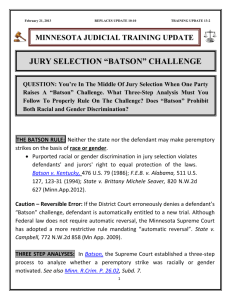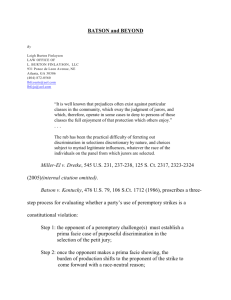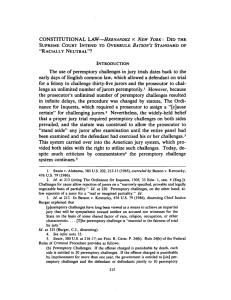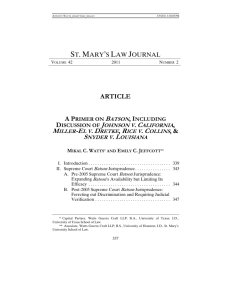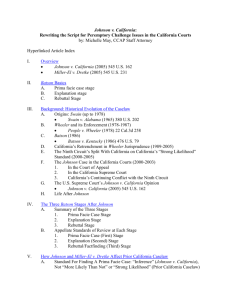How to Develop Your 10 minute Presentation
advertisement
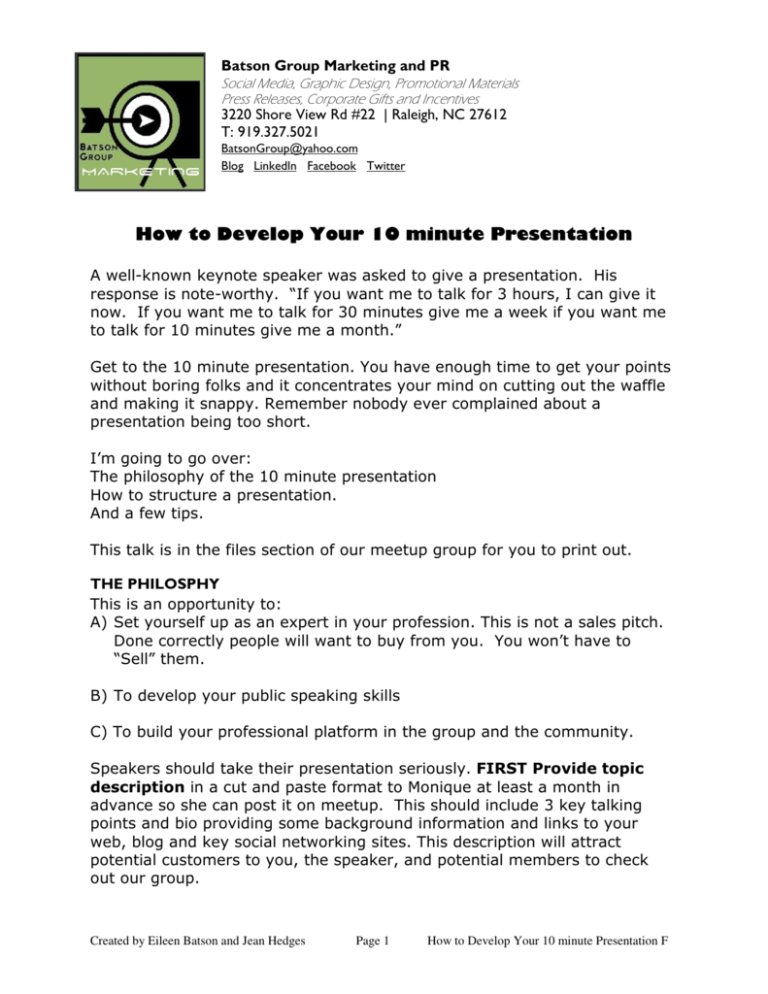
Batson Group Marketing and PR Social Media, Graphic Design, Promotional Materials Press Releases, Corporate Gifts and Incentives 3220 Shore View Rd #22 | Raleigh, NC 27612 T: 919.327.5021 BatsonGroup@yahoo.com Blog LinkedIn Facebook Twitter How to Develop Your 10 minute Presentation A well-known keynote speaker was asked to give a presentation. His response is note-worthy. “If you want me to talk for 3 hours, I can give it now. If you want me to talk for 30 minutes give me a week if you want me to talk for 10 minutes give me a month.” Get to the 10 minute presentation. You have enough time to get your points without boring folks and it concentrates your mind on cutting out the waffle and making it snappy. Remember nobody ever complained about a presentation being too short. I’m going to go over: The philosophy of the 10 minute presentation How to structure a presentation. And a few tips. This talk is in the files section of our meetup group for you to print out. THE PHILOSPHY This is an opportunity to: A) Set yourself up as an expert in your profession. This is not a sales pitch. Done correctly people will want to buy from you. You won’t have to “Sell” them. B) To develop your public speaking skills C) To build your professional platform in the group and the community. Speakers should take their presentation seriously. FIRST Provide topic description in a cut and paste format to Monique at least a month in advance so she can post it on meetup. This should include 3 key talking points and bio providing some background information and links to your web, blog and key social networking sites. This description will attract potential customers to you, the speaker, and potential members to check out our group. Created by Eileen Batson and Jean Hedges Page 1 How to Develop Your 10 minute Presentation F And SECONDLY Dress for Success – Be a professional in everything you do. Note that secretaries and assistants dress differently than Executives. HOW TO STRUCTURE A PRESENTATION Every presentation has a beginning, a middle, and an end. It may seem obvious but if you follow this approach there should be no great problems. Starting a presentation This is the most important part of the presentation and serves two main purposes 1. To act as an attention grabber for the audience 2. To let your elevated levels of adrenaline racing through your blood stream settle down, so that you can relax into your presentation The middle of a presentation A good presentation technique is the rule of three. The rule of three is based on the technique that people tend to remember three things. In oratory it comes up all the time. Here are some examples: "Friends, Romans, countrymen" "The good, the bad and the ugly" "Blood, sweat and tears" The end of the presentation The end is more important than the beginning. There is a factor called recency. This is where people remember most the last thing that they are told. This particularly applies to lists. So the ending of the presentation is key. There are a number of techniques that can work well, but they should be all related to the main structure of the presentation. If you are really struggling for ideas, and want to play it safe, you could simply recap on the three main concepts that you have put forward in the middle section. STEPS Identify the topic of your speech. If it is up to you to select the topic, choose a subject that you know well and target it so that is appropriate for your audience. 2. Research your subject. If it is not a subject with which you are familiar, start with the most general background sources that you can find. Good examples include an encyclopedia, the internet or a newspaper such as the NY Times. 1. Created by Eileen Batson and Jean Hedges Page 2 How to Develop Your 10 minute Presentation F 3. Know how many minutes you have to speak. This is very important 4. because you don't want to risk having too little or too much to say. You may also want to budget in time for questions at the end. Practice the speech after it is written, to get an idea of how much time it will take you to deliver it. Know your audience. Discuss things that the audience might specifically be interested in. For example, if you are giving a speech to a group of plant enthusiasts at the Botanical Gardens, speak about plants, aromatic uses of plants, famous botanists etc. 5. Write a succinct, single-sentence statement about your subject. This is similar to a thesis statement for a written paper. This statement is the foundation for your speech. 6. Outline the rest of your speech on index cards as you would outline a paper. Do not write out the speech. The outline is there to trigger your memory, not to give you a script. There should be no more than 3 - 5 subtopics that support your main statement. Make sure you know enough about each subtopic to speak briefly on each one. 7. Use one card for the introduction. This will include your main statement (or some variation of it). Use one or two cards for each subtopic and one for the conclusion which refers back to the main statement. 8. Write brief sentence fragments or even single words. These words or fragments should be ones that remind you about what you want to cover for that subtopic on each subtopic card or cards. They will act as triggers for your main points. 9. Practice your speech in front of a friend, a mirror or a group of stuffed animals. Practice looking at your audience more and your cards less. Time the length of the speech and tailor its length as needed. Remember - the greater crime is to bore the audience with a too long speech. Better to have a short and wellrehearsed one than a monologue that sends everyone to sleep. 10. Pretend that you are an expert talking to your friends when you give the speech. Most of the people in the room don't know the material better than you do. You are sharing information with them. 11. Make eye contact with members of your audience. Speak slowly and breathe slowly. If eye contact is too intense for you, look just above their heads at a point such as a clock or a painting. Try to not focus intently on one place, however move your eyes around a bit. 12. Do not leave the podium immediately after you finish giving your speech. Count up to 15 in your head before leaving the podium. If there is an option for questions, it always engages the audience more to respond from the podium than to return to a seated position and attempt to answer questions. TIPS: • Don't over research. There is only so much information the audience is capable of digesting and remaining alert to listen to. • Slow down. We all speak more quickly in front of a room than we think we do. No • one ever gave a public talk too slowly. To avoid speaking too quickly, emphasize hard consonants (d, k, t and so on). Pacing. When you are going to say important things, you should keep quiet for some seconds before saying the point, it will hold the attention of the audience. Then after you've said the point, you should again keep quiet, it will give the audience time to digest what you said. Created by Eileen Batson and Jean Hedges Page 3 How to Develop Your 10 minute Presentation F • • • • Dress to impress. You will feel better and look better doing it. Stay calm. Use words such as "we" and "ours" instead of "me" and “mine" and “I”. If possible, use visual or audio aids. Humor is always a plus! Remember … • • • No one here is an experienced public speaker Everyone is learning just like you Enjoy yourself! Know Why You Are Presenting • • • Building your platform Establishing visibility and credibility as an expert in your market Not selling directly The content should not be a direct sales presentation of your product— this comes across as pushy and aggressive. You will repel sales vs. being an expert; you will invite people to come to you to ask questions and to refer people to you who have questions without the fear of being pushed in “buying something” In the end those who have a need and the means to purchase will do so; those who do not will be more likely to give you referrals. In addition, pushy sales people tend to have a high initial closing rate, have poor relationships and are continually working hard for the next sale, rather than relaxing and letting the repeat business and referrals come to them Choose a topic that is important to people in need of your product or service. Don’t be an expert in something you did in a past life; your goal is to build your platform in your current position • • • Leave 10 minutes for open discussion and questions Don’t overrun and cut into your Q and A/discussion time Difference between Coffee and Contacts and other groups – We encourage the group to elaborate as well as ask questions. Delivery • • • Talk slowly and clearly Don’t rush through your points More information isn’t always better Created by Eileen Batson and Jean Hedges Page 4 How to Develop Your 10 minute Presentation F • • • • • Give your audience an excuse to call you or have a one on one for more information You will always be polishing and refining your speaking skills This is just the first step For those of us just starting out who don’t do much public speaking, the basics will be enough! If you have given presentations in the past your goal will be to take your skills to the next level. Relax • • • • • • Relax you are among friends Convert stress to productive energy Think about the opportunity you have with Coffee and Contacts This is a safe place to grow professionally We are here to support your success Enjoy Your 10 Minutes of Fame! Created by Eileen Batson and Jean Hedges Page 5 How to Develop Your 10 minute Presentation F
